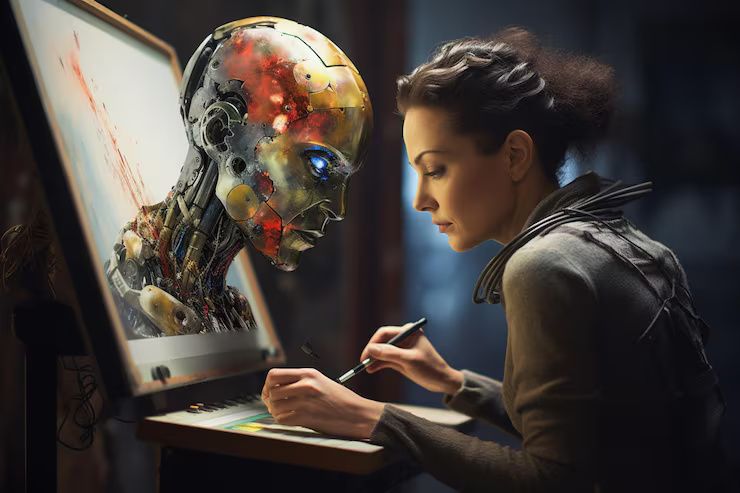Tips and advice on using AI and 3D technologies for creative projects
Artificial intelligence (AI) and 3D technologies are transforming the way creative projects are imagined, designed, and delivered. From 3D modeling in architecture to AI-powered art generation, these tools allow creators to save time, explore new possibilities, and improve precision. What once required hours of manual work can now be streamlined with machine learning algorithms and intuitive 3D design platforms.
The demand for immersive experiences in gaming, film, product design, and marketing is one of the key reasons AI and 3D are becoming mainstream. Their role is not only to enhance creativity but also to bridge the gap between imagination and execution.

Importance – Who benefits and what problems it solves
The importance of AI and 3D technology lies in their ability to simplify complex processes and expand creative opportunities:
-
Artists and Designers: AI can help generate design variations quickly, while 3D tools allow them to visualize and prototype ideas in real time.
-
Businesses and Marketers: Companies use AI to generate realistic simulations or 3D product demos that help customers understand offerings better.
-
Education and Training: 3D simulations are widely used for training in medicine, engineering, and other technical fields.
-
Entertainment Industry: Films, animations, and games rely on both AI-driven effects and detailed 3D modeling to deliver lifelike experiences.
This combination addresses key challenges like cost reduction, faster project turnaround, improved accuracy, and easier collaboration.
Recent Updates – Emerging trends and innovations
In the past year, several updates in AI and 3D technology have influenced creative projects:
-
Generative AI for 3D Models (2024): Tools like OpenAI’s Shap-E and NVIDIA’s generative design platforms have introduced AI systems that can produce 3D assets directly from text prompts.
-
AI-Driven Rendering: AI-enhanced rendering software now reduces processing times while maintaining high-quality graphics, benefiting industries such as gaming and VR.
-
Integration with AR/VR: 3D content is being increasingly integrated into augmented and virtual reality platforms, creating more immersive environments.
-
Sustainability Focus: Companies are adopting 3D simulations to reduce physical prototypes, lowering waste and costs in industries like fashion and manufacturing.
Laws or Policies – Regulations shaping AI and 3D use
The use of AI and 3D technologies is guided by evolving rules and frameworks:
-
AI Ethics Guidelines: Many governments, such as the European Union, have proposed AI Acts to regulate transparency, bias, and responsible use of artificial intelligence.
-
Intellectual Property Rights: Questions about ownership of AI-generated content continue to shape copyright laws worldwide. Creators must ensure they have rights to distribute or sell AI-assisted work.
-
Data Protection Laws: AI tools that rely on personal data for training must comply with regulations such as GDPR (Europe) and CCPA (California).
-
Export Controls on 3D Printing: Some countries have restrictions on 3D printing of sensitive items, such as weapons or critical machine parts, due to security concerns.
Tools and Resources – Helpful platforms for creators
A range of accessible tools are available for individuals and businesses:
-
AI Tools for Creativity:
-
DALL·E / MidJourney – for AI-generated images and concept art.
-
Runway ML – for AI-powered video editing and special effects.
-
ChatGPT – for brainstorming project ideas and scripts.
-
-
3D Design Tools:
-
Blender – open-source 3D modeling and animation software.
-
Autodesk Maya – industry-standard tool for film and gaming design.
-
Tinkercad – beginner-friendly 3D modeling for education and small projects.
-
-
Collaboration Platforms:
-
Unity and Unreal Engine – for building interactive 3D experiences.
-
Figma with AI plug-ins – for team-based creative workflows.
-
-
Supporting Resources:
-
Sketchfab – for sharing and exploring 3D models.
-
GitHub repositories – for experimenting with open-source AI + 3D projects.
-
Table – Key Benefits of AI vs 3D Technologies
| Aspect | AI in Creative Projects | 3D Technologies in Creative Projects |
|---|---|---|
| Speed | Automates repetitive tasks, faster drafts | Rapid prototyping, instant visualization |
| Cost Efficiency | Reduces labor hours | Cuts costs of physical prototypes |
| Creativity Expansion | Suggests new patterns, designs, or ideas | Enables realistic simulations and models |
| Accessibility | No advanced design skill required | Beginner-friendly tools like Tinkercad |
| Industry Use | Content generation, video editing | Gaming, AR/VR, architecture, manufacturing |
FAQs – Common questions about AI and 3D in creativity
1. Can AI completely replace human creativity?
No, AI enhances creativity but does not replace it. Human input is still required for direction, context, and originality.
2. Do I need advanced technical skills to use 3D tools?
Not always. Beginner-friendly platforms like Tinkercad and Canva 3D provide entry-level access, while advanced software requires training.
3. Is AI-generated artwork protected by copyright?
This depends on the country. Some legal systems grant rights to the user who directs the AI, while others are still debating ownership.
4. What industries benefit most from AI and 3D?
Industries such as gaming, film, fashion, product design, and education benefit the most due to their reliance on visual creativity.
5. Are AI and 3D technologies expensive?
Costs vary. Many open-source and freemium tools exist, but professional platforms with advanced features can be costly.
Final Thoughts
AI and 3D technologies are no longer limited to specialized industries—they are becoming essential tools for artists, designers, educators, and businesses. By combining the strengths of both, creators can accelerate workflows, enhance innovation, and bring ideas to life more effectively. However, it’s equally important to consider ethical, legal, and financial aspects while integrating these technologies. With the right approach, AI and 3D can empower creative projects to reach new levels of impact and engagement.
